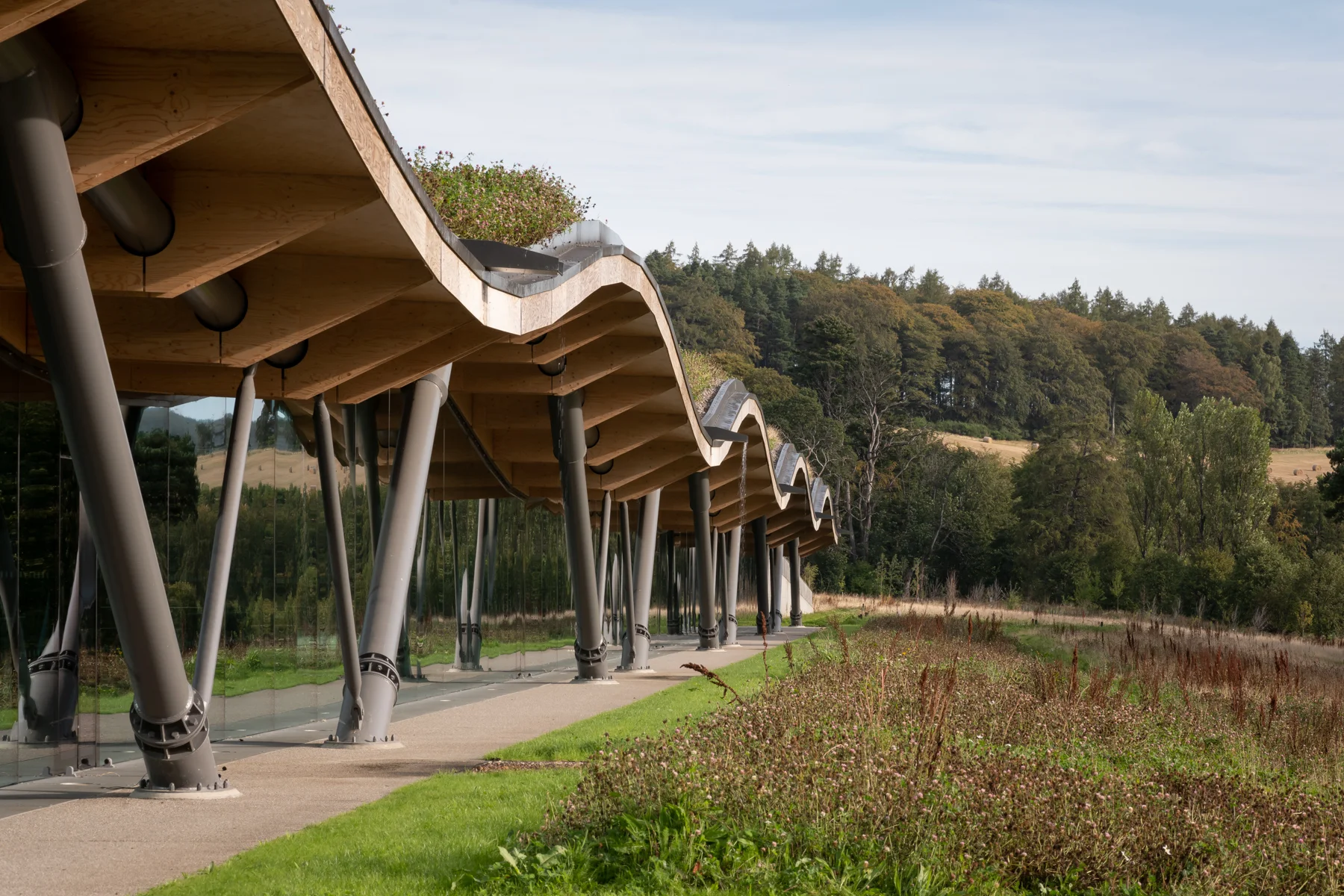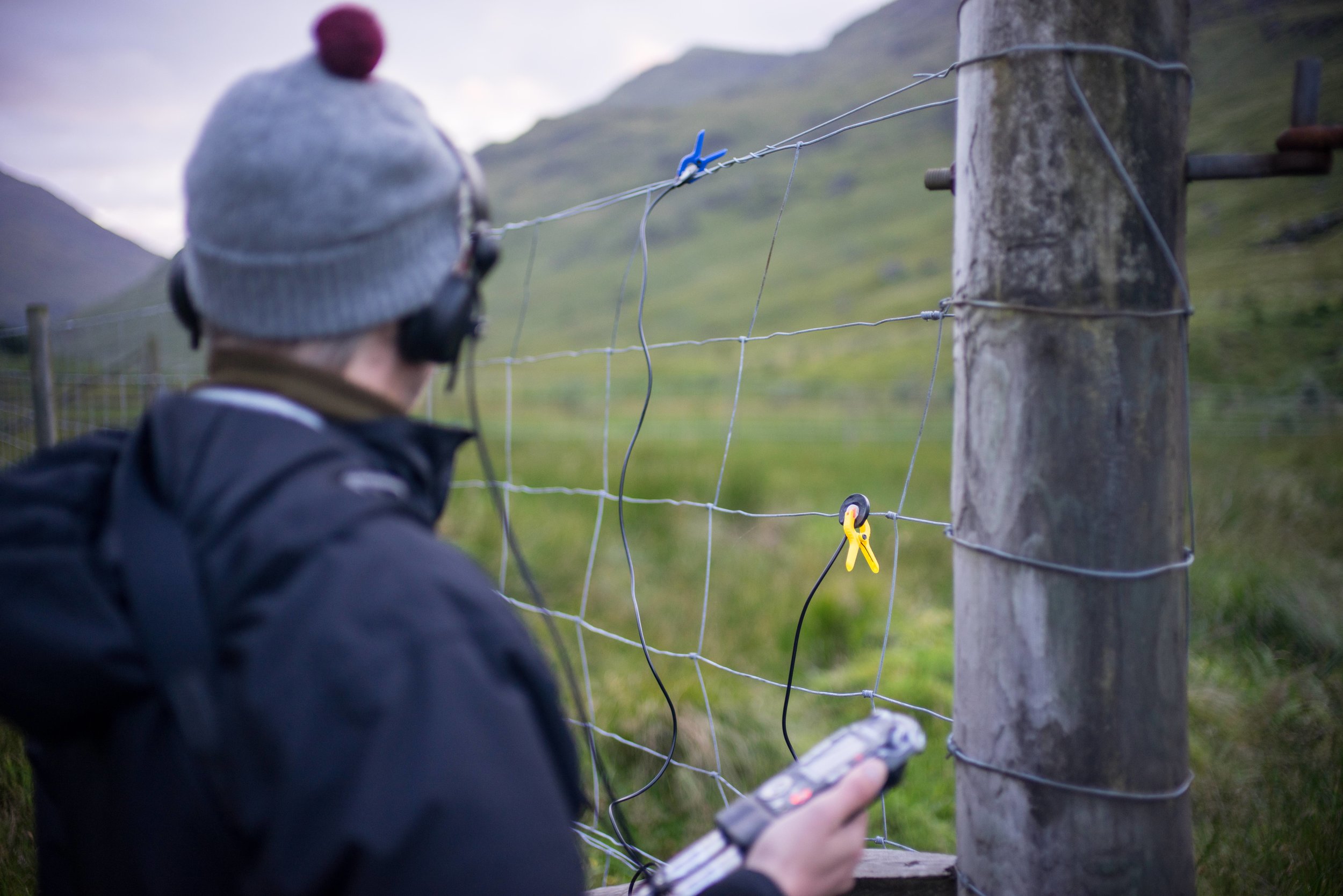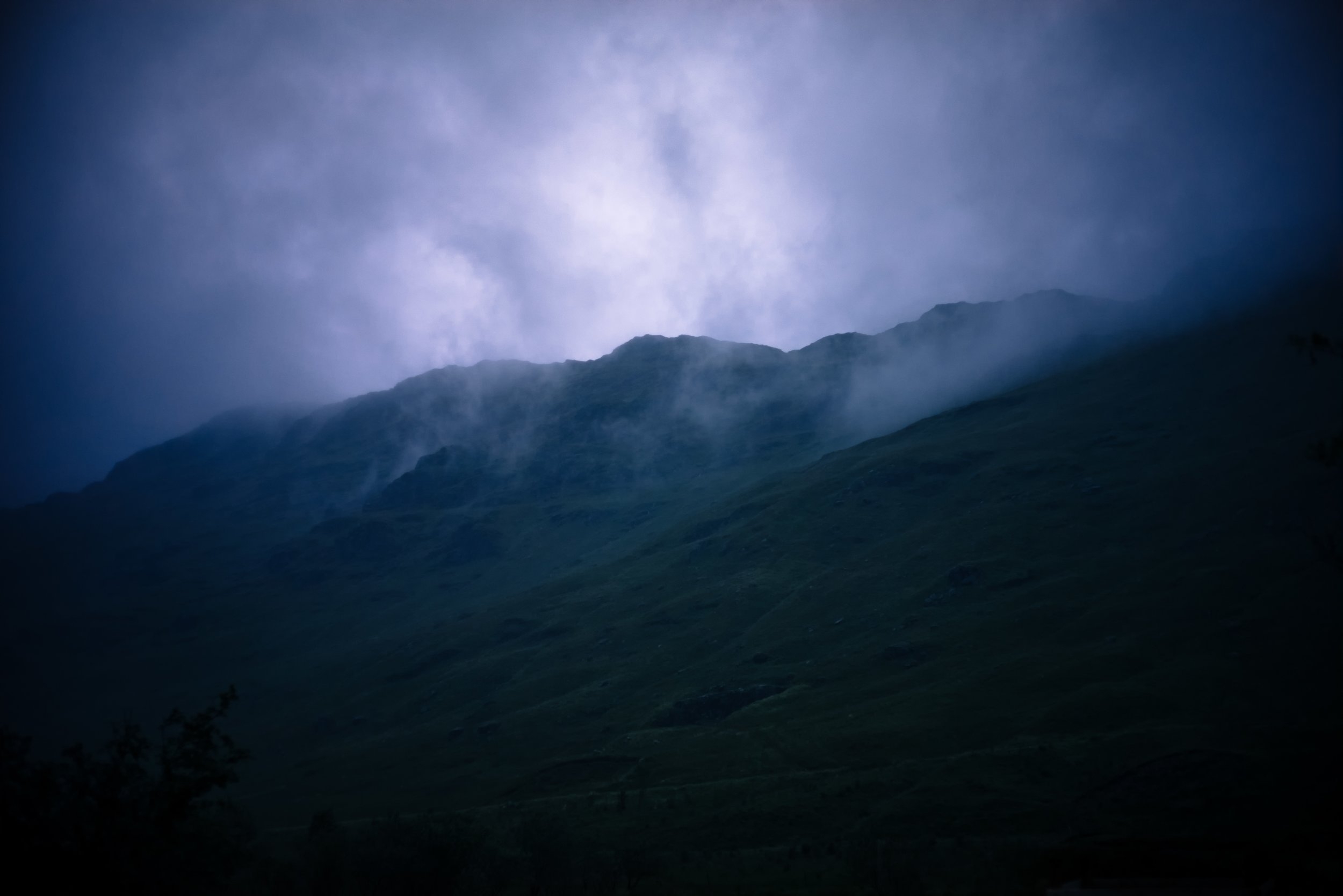The sea wall runs for a short stretch along Basin Road South. Brown slabs of pebble dash concrete about 2 meters high with a slight curve towards the sea at the top. I place my microphone on the pavement facing this structure and press record.
It’s along this stretch that lorries park up, there are often many here over night and I assume the drivers sleep here in between long journeys. As I kneel down to set up my microphone my nose picks up a faint scent of shit. Fox or human, I don’t know.
The sea wall from the road
It’s a beautiful sunny morning, the heavy rain has eased but the wind is still strong and the sea is left churned up and busy. As I stand here on the road, also busy with passing cars and lorries, I can hear the roar of the sea over the wall, the in and out breath of the waves, the crash and white noise sizzle of pebbles being thrown and dragged.
The sea wall from the beach on a grey day
In the distance I hear the scraping of metal machinery against shingle. The sounds of the latest sea defence work further to the West.
The road gets busier. A Day aggregate truck pulls up and idles. Constant trucks and other vehicles passing. Cyclists hugging the gutter to avoid the angry sounding Diesel engines and screech of hydraulics. A vehicle reversing alert bounces off the wall. Beeps replaced with a sort of screeching sound. I wonder about the research that led to this change. Maybe this new sound carries less and was found to be less intrusive. It sounds like an angry dinosaur.
A brief calm. Dripping behind me. Waves over the wall. A creaky cyclist passes.
The sea defence wall from the beach
I’m interested in this sea wall and the acoustics of it. What it does to the sounds either side of it. Does it contain the sound of the sea as well as its physical power? I’ve been wondering for a while about blasting sounds at that structure. This recording uses contact microphones to tune in to the physical vibrations of the material.












